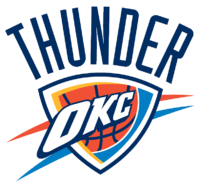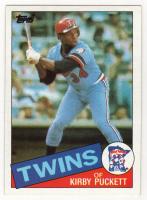 I love maps. I love charts. I love rankings. I love comparing the quantitative differences between major cities. I don’t know why I love this stuff; I just do. So bear with me while I geek out on this a little.
I love maps. I love charts. I love rankings. I love comparing the quantitative differences between major cities. I don’t know why I love this stuff; I just do. So bear with me while I geek out on this a little.
Minnesotans (at least, I think it goes beyond me individually) sometimes have an inferiority complex, especially those of us who live in the Minneapolis-St. Paul metro area. We are a major city, the 16th largest metro area in the country. We have a diverse and strong economy, with a prominent national and international role in medical technology, arts and design, retail and manufacturing. We have an excellent arts community, and the highest number of theaters per capita of any American city besides New York. We have excellent parks and recreational opportunities. And, as I’ll get to in a minute, we have teams in all four major league sports (NFL, MLB, NBA, and NHL). In short, this is a great American metro area, and the gem of the upper Midwest.
And yet, we feel inferior. We feel inferior to Chicago. We feel ignored by the rest of the country, who think of this only as a place too cold to ever visit, much less live in. (Never mind the fact that in July and August this place can be unbearably hot, and we typically experience warm weather from April to October.)
I was reflecting on this today, partly as I marveled at the fact that the comparatively tiny city of Green Bay, Wisconsin, has managed to retain an NFL team since the league’s inception (though that’s mainly due to their unique ownership arrangements). I thought about how it always seems like our sports teams are the ridiculed underdogs, occasionally openly dismissed by sportscasters despite their successes. (I’m thinking particularly of the loathsome Cris Collinsworth and his generally disdainful commentary on the Vikings’ pair of ignoble defeats on NBC’s Sunday Night Football in recent weeks.)
I also think about this a lot whenever talk of one of our major league teams relocating comes up. There are frequent cries that this market is simply too small to sustain the teams it has. Never mind the fact that in every one of the leagues its four major teams participate in, Minneapolis-St. Paul is above the median market size (even ignoring Green Bay). We are one of only 13 markets with teams in all four sports. And I think we deserve to keep it that way. But I wanted to have a more complete picture of how the leagues and the markets they “live” in break down, so I created a table. I found the 50 largest metro areas in the country, and compiled data on the number of teams each has in the NFL, MLB, NBA and NHL. I decided to throw in MLS too, since it’s growing rapidly in popularity (not that you’d know it around here). Here’s what I came up with:
| Rank | City | Population | NFL | MLB | NBA | NHL | MLS | Total |
|---|---|---|---|---|---|---|---|---|
| 1 | New York, NY | 19,006,798 | 2 | 2 | 2 | 3 | 1 | 10 |
| 2 | Los Angeles, CA1 | 12,872,808 | – | 2 | 2 | 2 | 2 | 8 |
| 3 | Chicago, IL | 9,569,624 | 1 | 2 | 1 | 1 | 1 | 6 |
| 4 | Dallas/Fort Worth, TX | 6,300,006 | 1 | 1 | 1 | 1 | 1 | 5 |
| 5 | Philadelphia, PA | 5,838,471 | 1 | 1 | 1 | 1 | 1 (2010) | 5 |
| 6 | Houston, TX | 5,728,143 | 1 | 1 | 1 | – | 1 | 4 |
| 7 | Miami/Fort Lauderdale, FL | 5,414,772 | 1 | 1 | 1 | 1 | – | 4 |
| 8 | Atlanta, GA | 5,376,285 | 1 | 1 | 1 | 1 | – | 4 |
| 9 | Washington, DC | 5,358,130 | 1 | 1 | 1 | 1 | 1 | 5 |
| 10 | Boston, MA | 4,522,858 | 1 | 1 | 1 | 1 | 1 | 5 |
| 11 | Detroit, MI2 | 4,425,110 | 1 | 1 | 1 | 1 | – | 4 |
| 12 | Phoenix, AZ | 4,281,899 | 1 | 1 | 1 | 1 | – | 4 |
| 13 | San Francisco/Oakland, CA3 | 4,274,531 | 2 | 2 | 1 | – | – | 5 |
| 14 | Inland Empire, CA4 | 4,115,871 | – | – | – | – | – | 0 |
| 15 | Seattle, WA5 | 3,344,813 | 1 | 1 | – | – | 1 | 3 |
| 16 | Minneapolis/St. Paul, MN | 3,229,878 | 1 | 1 | 1 | 1 | – | 4 |
| 17 | San Diego, CA | 3,001,072 | 1 | 1 | – | – | – | 2 |
| 18 | St. Louis, MO | 2,816,710 | 1 | 1 | 1 | – | – | 3 |
| 19 | Tampa Bay, FL | 2,733,761 | 1 | 1 | – | 1 | – | 3 |
| 20 | Baltimore, MD | 2,667,117 | 1 | 1 | – | – | – | 2 |
| 21 | Denver, CO6 | 2,506,626 | 1 | 1 | 1 | 1 | 1 | 5 |
| 22 | Pittsburgh, PA | 2,351,192 | 1 | 1 | – | 1 | – | 3 |
| 23 | Portland, OR | 2,207,462 | – | – | 1 | – | 1 (2011) | 2 |
| 24 | Cincinnati, OH | 2,155,137 | 1 | 1 | – | – | – | 2 |
| 25 | Sacramento, CA | 2,109,832 | – | – | 1 | – | – | 1 |
| 26 | Cleveland, OH | 2,088,291 | 1 | 1 | 1 | – | – | 3 |
| 27 | Orlando, FL | 2,054,574 | – | – | 1 | – | – | 1 |
| 28 | San Antonio, TX | 2,031,445 | – | – | 1 | – | – | 1 |
| 29 | Kansas City, MO | 2,002,047 | 1 | 1 | – | – | 1 | 3 |
| 30 | Las Vegas, NV7 | 1,865,746 | – | – | – | – | – | 0 |
| 31 | San Jose, CA | 1,819,198 | – | – | – | 1 | 1 | 2 |
| 32 | Columbus, OH | 1,773,120 | – | – | – | 1 | 1 | 2 |
| 33 | Indianapolis, IN | 1,715,459 | – | 1 | 1 | – | – | 2 |
| 34 | Charlotte, NC | 1,701,799 | 1 | – | 1 | – | – | 2 |
| 35 | Hampton Roads, VA8 | 1,658,292 | – | – | – | – | – | 0 |
| 36 | Austin, TX | 1,652,602 | – | – | – | – | – | 0 |
| 37 | Providence, RI | 1,596,611 | – | – | – | – | – | 0 |
| 38 | Nashville, TN | 1,550,733 | 1 | – | – | 1 | – | 2 |
| 39 | Milwaukee, WI9 | 1,549,308 | – | 1 | 1 | – | – | 2 |
| 40 | Jacksonville, FL | 1,313,228 | 1 | – | – | – | – | 1 |
| 41 | Memphis, TN | 1,285,732 | – | – | 1 | – | – | 1 |
| 42 | Louisville, KY | 1,244,696 | – | – | – | – | – | 0 |
| 43 | Richmond, VA | 1,225,626 | – | – | – | – | – | 0 |
| 44 | Oklahoma City, OK | 1,206,142 | – | – | 1 | – | – | 1 |
| 45 | Hartford, CT | 1,190,512 | – | – | – | – | – | 0 |
| 46 | New Orleans, LA10 | 1,134,029 | 1 | – | 1 | – | – | 2 |
| 47 | Buffalo, NY | 1,124,309 | 1 | – | – | 1 | – | 2 |
| 48 | Birmingham, AL | 1,117,608 | – | – | – | – | – | 0 |
| 49 | Salt Lake City, UT | 1,115,692 | – | – | 1 | – | 1 | 2 |
| 50 | Raleigh, NC | 1,088,765 | – | – | – | 1 | – | 1 |
An interesting list, and it led to a few surprising observations:
1. There are the “old” major cities and the “new” major cities. Strong representation among the major sports leagues — especially the older NFL and MLB — is more common among older, more established cities, even though they may be on the decline in recent decades, like St. Louis, Pittsburgh, Cleveland and Kansas City. On the other hand, cities that have grown substantially in recent decades (even though they may be very old cities) typically either have no major league teams, or if they do, their teams tend to be in the newer (or more recently-expanded) NBA, NHL and MLS: cities like Las Vegas, San Antonio, Austin and Orlando.
2. Certain sports are more established in different regions. All of the sports seem to have their greatest representation in the oldest and most densely populated region of the country: the Northeast. But that area is especially well-represented in the NFL, whereas the NFL’s representation in the South is more sparse and newer — expansion teams like Jacksonville and Carolina — which may be due to college football’s comparatively strong popularity in the South. The rapid expansion of the NHL and NBA over the past 20 years has also led to more teams in markets in the South and West that have not typically been home to major sports franchises.
3. Major sports teams make a “major” city. Cities that have major league sports teams — especially those cities with multiple teams — seem bigger and more “important” than those that don’t, regardless of their relative populations. This is highly subjective, I realize, and maybe it’s just my own impression of those cities. But I think the frequent national exposure a city receives as a result of hosting a major team (especially an NFL team, as this is clearly the biggest “event” sport in the country today) creates a nationwide impression of that city as being major in a way that almost nothing else can. (Perhaps this is why we in Minneapolis-St. Paul fight so hard for our status as a “major league” city, and why our governor once compared a Vikings-less Minnesota unfavorably to Des Moines, Iowa.)
Consider for a moment your relative impression of Austin, Texas to that of Milwaukee. Which one seems like a more “major” city to you? Now compare their populations on the chart. Or, compare your impression of New Orleans to Providence, Rhode Island. (I think the fact that I feel compelled to name the state of the city without a major sports team in both of these examples says it all.)
It’s a big reason why all of the sports teams in Minnesota use “Minnesota” in their names instead of “Minneapolis.” Until the Wild arrived in St. Paul, it would have been accurate to discuss the Minneapolis Twins, Minneapolis Vikings and Minneapolis Timberwolves, but what would that do to St. Paul’s reputation and self-image? It’s bad enough as it is.
Addendum: After writing this post, I discovered a handy and closely-related chart on Wikipedia listing US and Canadian cities by number of professional sports teams. Of note: the only city in the United States that is not in this list of the top 50 but is home to a major sports team is, of course, Green Bay. Nine Canadian cities have at least one team in these “American” sports leagues (mostly NHL). There are a few variances in the population rankings comprising this list vs. those I used for my list. Some may be simply out-of-date, but others may be based on different interpretations of what constitutes a metro area. Most notable in this regard is that San Jose is typically considered part of the San Francisco Bay Area rather than a distinct metro area.
Notes
1 Los Angeles did, of course, have two NFL teams for many years, until the Raiders returned to Oakland and the Rams fled to St. Louis, of all places, after the 1994 season.
2 Detroit fascinates me for many reasons, not least of which being its ability to hang on to both its four major sports teams and its 11th place ranking (though it’s slipped from its one-time peak at number 3) among major U.S. metro areas.
3 San Francisco’s position at number 13, along with its lack of NHL and MLS teams, may appear somewhat arbitrary; I’ve typically seen San Jose lumped into the same Combined Statistical Area, bumping it up to sixth place and, along the way, giving it San Jose’s NHL and MLS teams.
4 The Inland Empire lacks any major sports teams, true. It also lacks any kind of cohesive center or place of relevance (beyond jokes about funny-sounding place names like Rancho Cucamonga) in the minds of anyone besides its residents. Having lived there myself (in Claremont and Upland) for a little over two years in the late ’90s, I take that personally. It is most especially ignored by those who live in the Greater Los Angeles Area west of the San Jose Hills.
5 I still can’t believe the Supersonics ended up in Oklahoma City. That’s crazier than the Rams going to St. Louis.
6 Denver’s the smallest city with full representation in the five major league sports. But given that Denver is the outpost of metropolitanism for several states — I can attest from first-hand experience that there are people in northeastern Montana whose “local” TV channels are the Denver affiliates — its radius of influence significantly exceeds its immediate physical region.
7 While it’s true that the rapid growth of the Las Vegas metro area over the past 20 years may explain its lack of major sports franchises, the reluctance of the leagues to become (ah-hem, openly) involved in the world of sports gambling is also a well-known factor.
8 Hampton Roads probably suffers mainly from an identity crisis. Officially known as the Virginia Beach-Norfolk-Newport News MSA, a name that doesn’t really roll off the tongue, Hampton Roads is one of the oldest established population centers in the country, but it doesn’t seem to have the requisite prominent central city to attach sports teams to. However, it does look like Norfolk has come close to acquiring at least one major team in recent years. (Unfortunately I lost that citation among the mountain of links I clicked on to compile this list.)
9 I never realized Milwaukee was so far down on this list. I guess that’s what having a well-known Major League Baseball team for decades will do for a city.
10 And I’m really surprised New Orleans is this far down on the list, even after the population drop in the wake of Hurricane Katrina.

 With Wimbledon underway and the Olympic Trials picking up speed, SLP and I have been watching a lot of sports on NBC this week. And the most breathless, repetitive story throughout has been the “marvel” of 41-year-old swimmer Dara Torres. 41. It is impossible for an NBC sportscaster to mention Dara Torres (41) without stating that she is 41. 41.
With Wimbledon underway and the Olympic Trials picking up speed, SLP and I have been watching a lot of sports on NBC this week. And the most breathless, repetitive story throughout has been the “marvel” of 41-year-old swimmer Dara Torres. 41. It is impossible for an NBC sportscaster to mention Dara Torres (41) without stating that she is 41. 41.